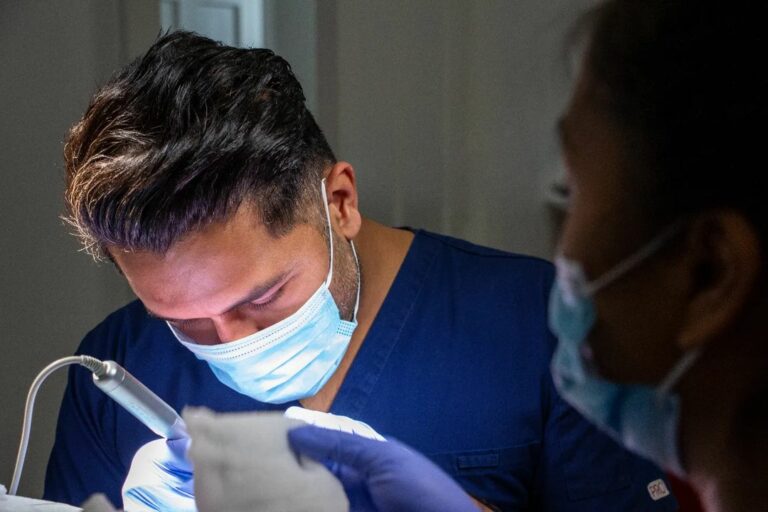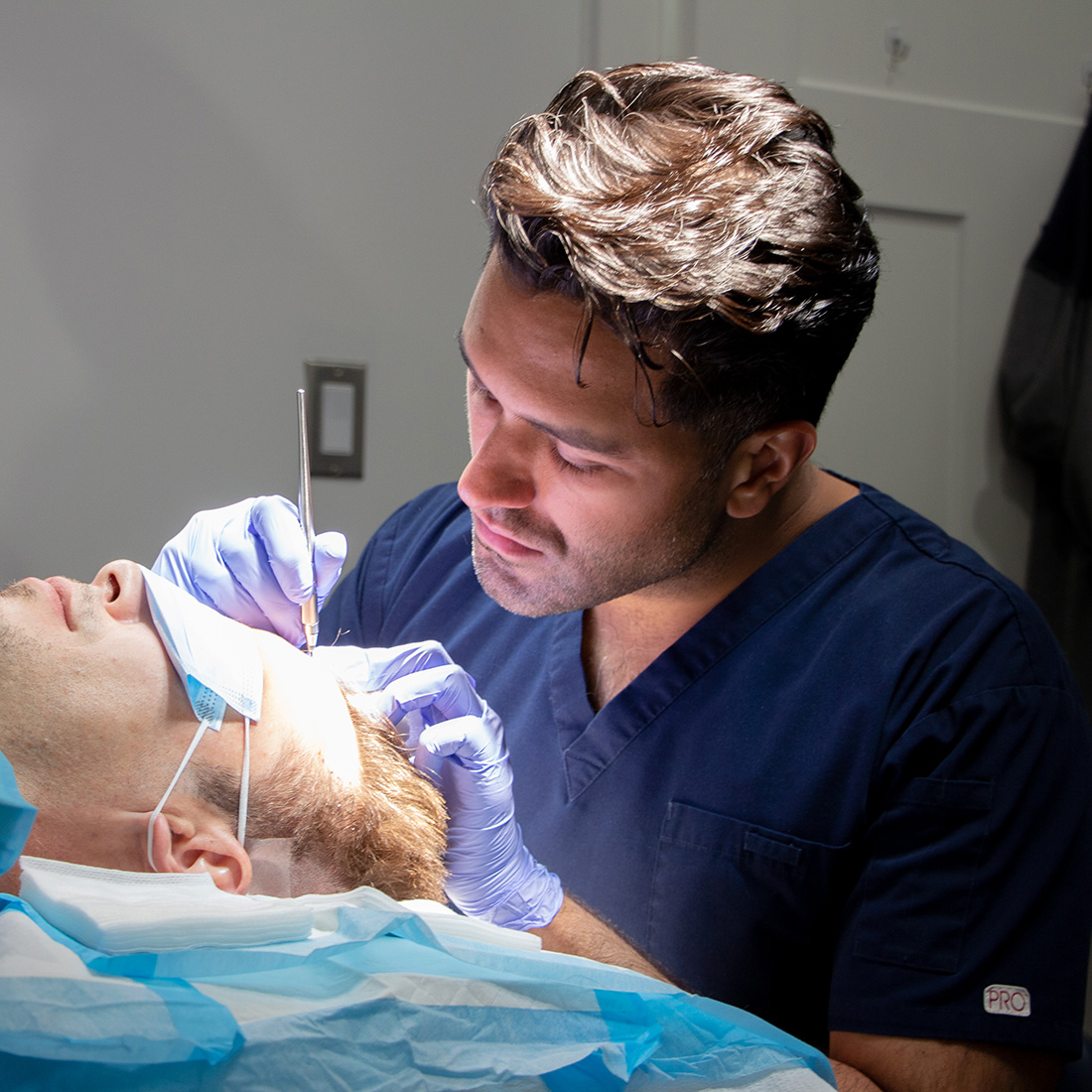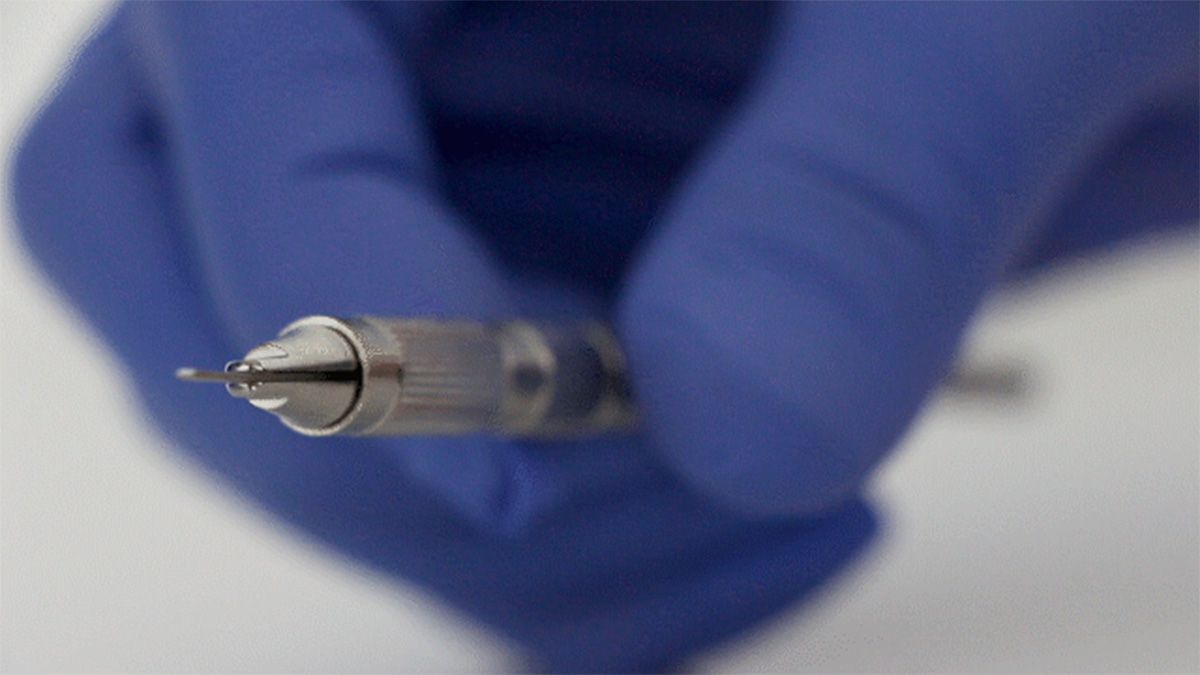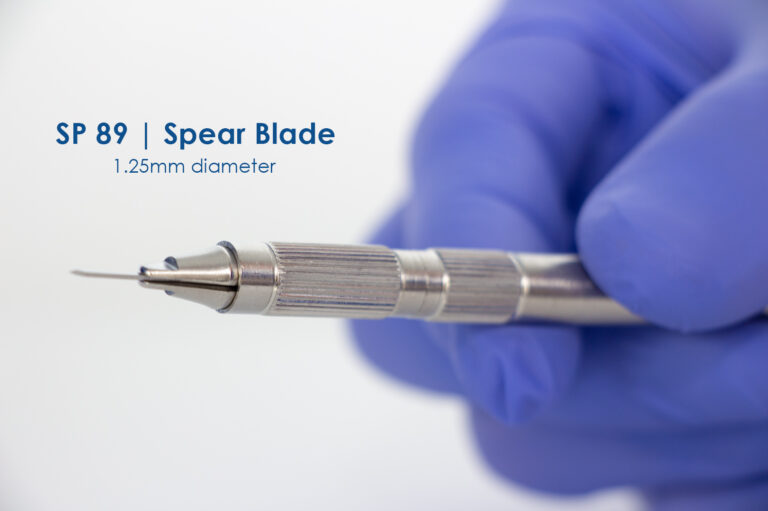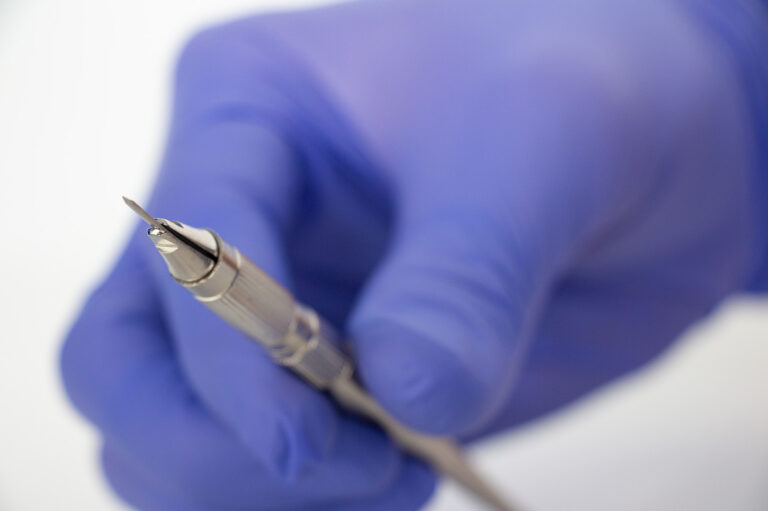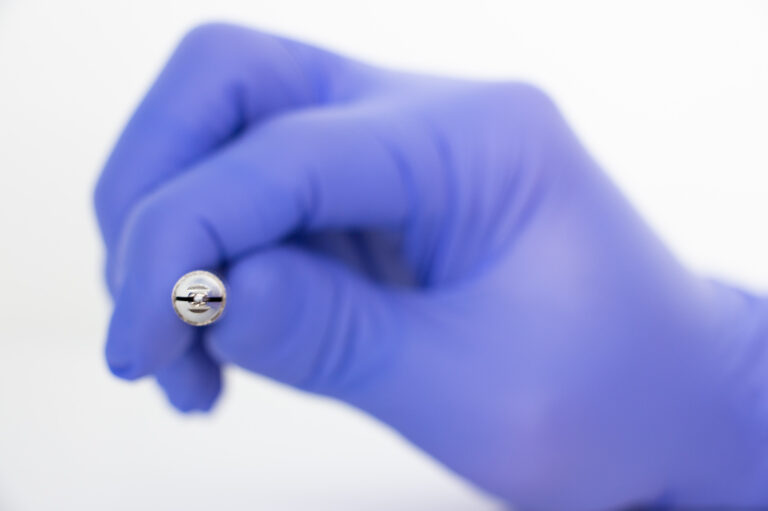What is used to make each incision?
Each patient will require a different sized blade for their incisions based on a few factors. Graft thickness, quality, spacing, and straightness. To promote the best healing Dr. Sharma will attempt to use the smallest blade possible. This also creates a tight channel that allows each graft to sit securely throughout the surgery.
The blade shown in this image is an SP 89 Spear Blade. The diameter of the tip is only 1.25mm.
Hair Transplant Incision Size
The grafts removed from the donor site (located at the back of the head) are excised with a fixed punch that has a 0.8mm diameter. This ensures that each graft is thin enough to fit into each incision without compromising the integrity of the follicle. This is true for both the F.U.E. & F.U.T. hair transplant techniques.
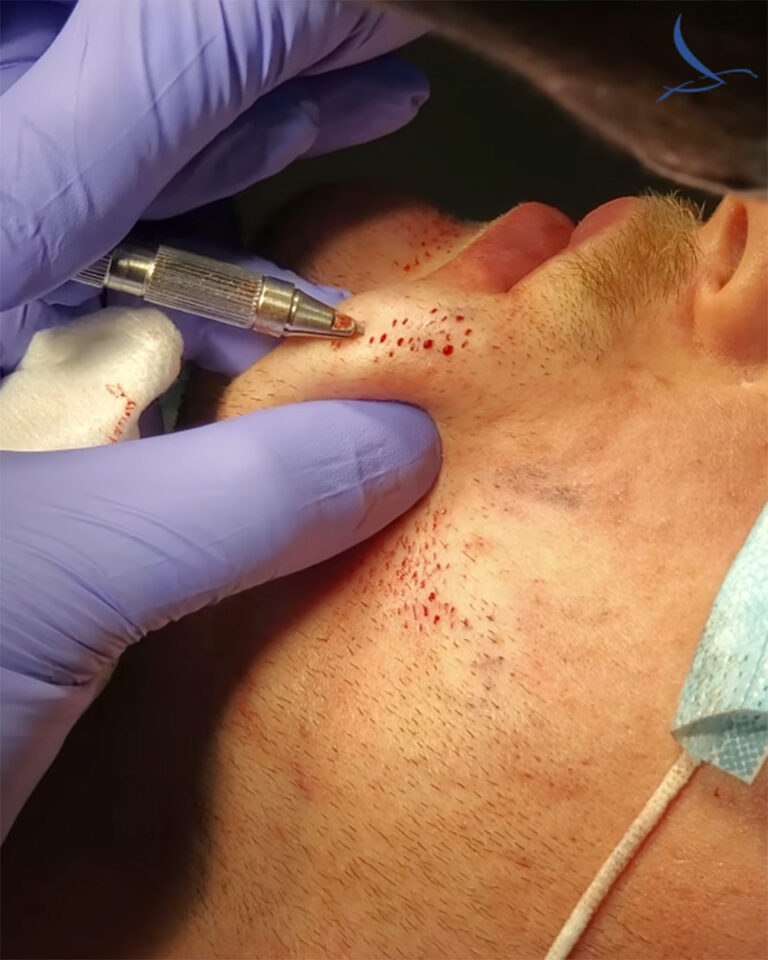
Incisions to The Recipient Area
What makes the incision process different at our clinic?
Every clinic has different standards for its hair transplant techniques. At Sharma Skin & Hair Surgery every hair transplant is performed personally by Dr. Anil Sharma. During a surgery every incision is created by his hand with a fixed blade.
Reasons to select an experienced surgeon like Dr. Sharma.
- Dr. Sharma performs each surgery himself.
- The blades are modified to match the depth of the incision and the width of the follicular unit.
- Every procedure is completed with the use of a blade, and never a needle.
- Technical skill and an artistic eye are required when designing the new hairline.
- Placement angle is of utmost importance. This will change depending on the recipient area and slowly shift throughout the procedure.
Transplant Slit Techniques
Slit Orientation, parallel & lateral
Slit orientation for the F.U.E. hair transplant technique can be either lateral or parallel.
- Incisions made in a parallel direction are referred to as sagittal slits.
- When made perpendicular to the direction of hair growth, they are called lateral slits.
Lateral slit technique
Natural hair does not grow in a random pattern. Hair gradually conforms to the shape of the head depending on the angle and area of the scalp. The lateral slit technique allows Dr. Sharma to mimic the unique growth patterns of each patient and make micro-adjustments throughout the incision process. As mentioned, both the angle, depth, and spacing of each incision will ultimately determine how the hair grows. With such a high amount of control Dr. Sharma is able to create an organic look – no matter where the transplanted hair is being placed.
This also remains true for the Beard Transplant procedure, where a smaller number of grafts are placed. When dealing with areas of lower density like the beard, it is integral that each incision matches the unique angles found on the cheek, chin, and neck.
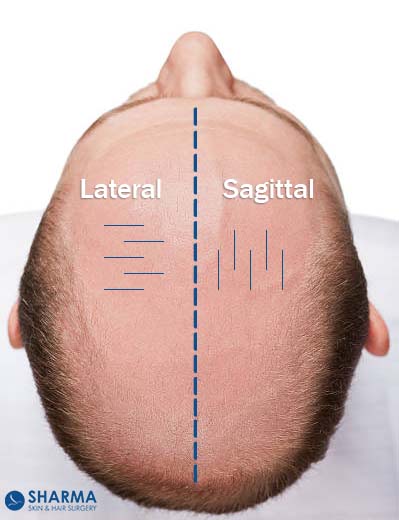
Advantages of Lateral Placement
- The vertical angle of the grafts placement creates minimal damage to the vasculature systems of the scalp.
- The small placement site is small providing a quicker healing time.
- The thinner incision allows for the highest amount of density.
- The smaller gap allows for a tighter fit for the graft.
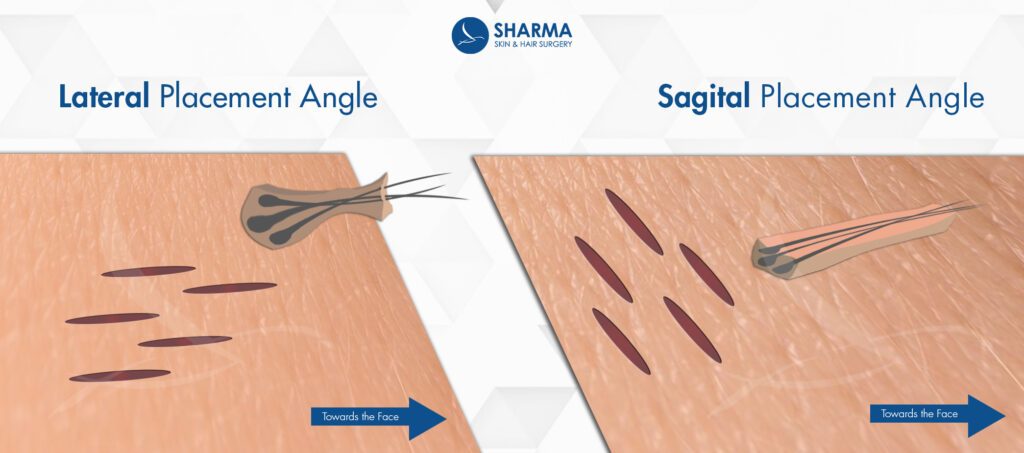
Reducing Trauma During the Hair Transplant Procedure not only Allows for a Faster Recovery Time, but it Improves the Final Result.
With less trauma comes less blood loss. Dr. Sharma uses bifocals with magnification lenses which allow him to operate in such a small area but blood quickly obscures the recipient area obscuring his view. The reduced trauma caused by the lateral slit technique allows for greater visibility throughout the procedure and in turn higher precision. This becomes imperative when attempting to achieve the highest graft density possible at the scalp.
Another factor alongside the angle is incision depth. Depending on the shape of the grafts the required depth can change. Someone with a curlier graft may require a less deep incision to host the follicular unit while a thinner and longer graft will require more depth. Dr. Sharma alone performs the incisions for each and every patient at our clinic – while our small surgical team assists throughout the entire procedure this step is mission critical and cannot be trusted to a technician.
Having the highest success rate possible is especially important for patients with a limited donor supply. Hair transplants relocate hair, this means we are depleting one area of hair to populate another. For patients with significant hair loss, or the potential for more hair loss in the future must ensure their procedure is safely relocating the highest percentage of grafts, part of a safe journey is a properly sized incision for the graft to be placed. Too snug of a fit can cause the graft to dislodge itself when placed under pressure or even prevent proper access to blood.
What is a Graft?
While researching the hair transplant procedure you are sure to come across this term many times. A graft is a collection of hair follicles. During a hair transplant procedure, Dr. Sharma redistributes thousands of follicles which can contain a single or even multiple hairs. The method used to loosen and excise each graft is determined based on the unique requirements of each individual patient.
Learn more about grafts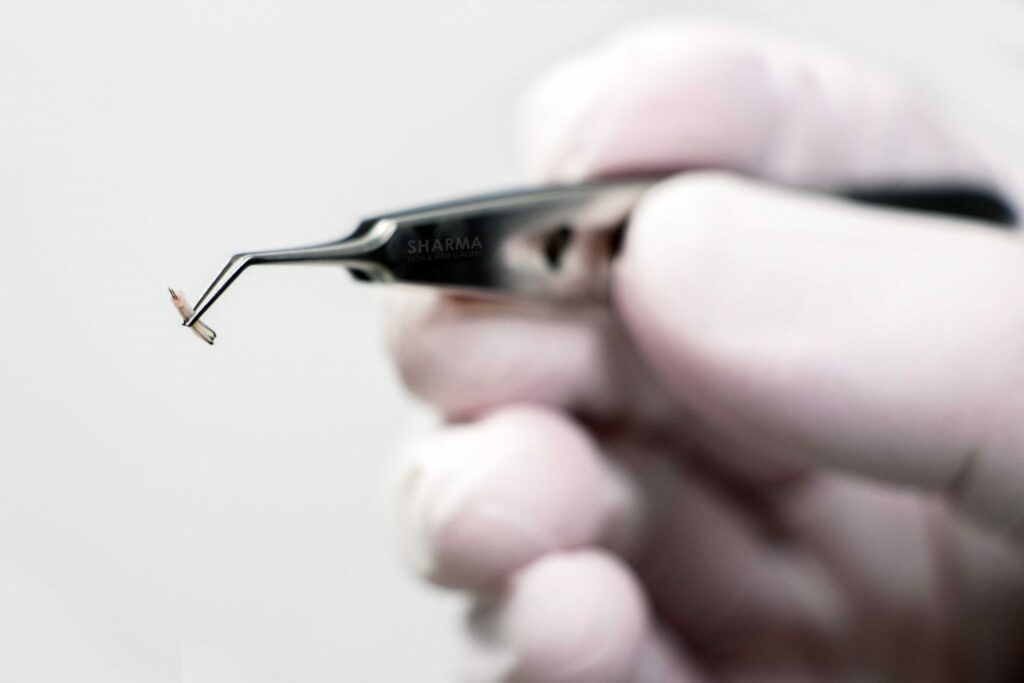
Each Patient has a Finite Number Grafts which are Suitable for Relocation.
Having the highest success rate possible is especially important for patients with a limited donor supply. Hair transplants relocate hair, this means we are depleting one area of hair to populate another. For patients with significant hair loss, or the potential for more hair loss in the future must ensure their procedure is safely relocating the highest percentage of grafts, part of a safe journey is a properly sized incision for the graft to be placed. Too snug of a fit can cause the graft to dislodge itself when placed under pressure or even prevent proper access to blood.
Maximizing Density Gives a More Natural and Full Result
For patients whose main goals are achieving high density – typically for cases addressing the forward hairline, tighter packing of grafts is required. To achieve this effect we tailor each graft, trimming down the unneeded tissues and fats away from the follicle to allow it to fit into a smaller incision. If we are going for coverage and packing a large area we are able to use fatter grafts which would typically be trimmed down. This allows for a greater margin of error and is most commonly used for the crown and midzone areas of the scalp.
Find some of our most frequently asked questions about hair transplant surgery here.
Book now
Talk to a Hair Transplant Expert in Edmonton, Alberta
Contact us for a free virtual hair loss consultation and get started on your transformation today.
